South Indian Food Dishes: Basic Overview
Common Ingredients
Common Cooking Methods
Courses
Meals
Key Taste
Eating Etiquette
Meal Presentation
Culinary Festivals
Influence and Fusion
South Indian Food Dishes: Origin and Region
Cuisine
Cuisine’s Geographical Territory
Country’s Region
Popular Types of South Indian Dishes
-
Pancakes
Pancakes in this region are thin, crepe-like dishes made primarily from fermented rice and lentil batter.
They are often served for breakfast or as a snack, accompanied by a variety of chutneys and sambar (a lentil-based stew).
-
Curries
South Indian curries are hearty, aromatic, and often spicy.
Local spices, including mustard seeds, curry leaves, and tamarind, are common components in these recipes.
They also include vegetables, lentils, fish, or meat. Curries are typically accompanied by rice or bread.
-
Rice Dishes
Rice is the staple food in South India, forming the base of many meals.
They can be simple, complex, flavorful preparations that mix spices, vegetables, or meats.
-
Fried Dishes
Fried dishes in South India include a variety of snacks and main courses made from vegetables, meats, or fish.
They are normally coated in seasoned batter and deep-fried until crispy.
South Indian dishes are those from the southern states of India, including Tamil Nadu, Andhra Pradesh, Karnataka, Kerala, Telangana, and Lakshadweep.
South India’s cuisine includes vegetarian and non-vegetarian options, though the vegetarian recipes are more prominent.
Common ingredients in these dishes are rice, lentils, coconut, tamarind, and local fruits and vegetables. Coconuts, in various forms, are particularly popular to enhance flavor.
Compared to Indian delicacies from other regions, South Indian fare boasts a highly robust flavor profile thanks to the generous use of spices such as mustard seeds, curry leaves, and red chili.
In South India, fermentation is crucial, particularly for making popular dishes like idli and dosa. The flavors in South Indian cuisine range from spicy and tangy to sweet and savory.
So here, let me introduce some of the most well-known South Indian delights. Moreover, you’ll have a closer look at this cuisine with its traditional food, global recognition, and healthy factors.
Later, I’ll show you some characteristics of these dishes based on meals, like breakfast, lunch, and dinner. There are some interesting facts about its regional cuisines that you should know as well. Plus, South Indian foods, compared with North Indian, have various distinctions.
Feel excited yet? Let’s scroll down and see the most popular Indian dishes I’ve prepared for you!
28 Popular South Indian Dishes with Filters
Exploring these 28 South Indian dishes will give you a deeper appreciation of the region’s culinary tradition. Additionally, you can filter and select dishes that interest you.
Here’s a breakdown of their categories, covering the most popular, traditional, street food, and fusion dishes.
South Indian fusion dishes blend traditional flavors with global influences. The cuisine also has Portuguese-inspired dishes, reflecting historical influences from colonial times.
Dosa
- Street Food
- Traditional
Dosa is a very common dish in South India. They are fermented crepes made from a batter of soaked rice and black lentils (urad dal), finely ground, and left to ferment overnight. Therefore, dosas have a characteristic sour flavor.
Locals typically cook these crepes on a hot griddle to come out with a golden-brown crispiness and a soft, slightly fluffy interior.
They’re traditionally served rolled or folded, often filled with mashed, spiced potato, coconut chutney, or paneer cheese fillings. Or else, enjoying these dosas with Indian pickles is also a great way to go.
While many historians agree that South Indians developed dosas, the proper birthplace of this treat remains in debate.
Masala Dosa
- Street Food
- Traditional
One of the most common dosa in South India is masala dosa, which stems from Udupi town in Karnataka.
The masala dosa batter is made from a fermented mixture of parboiled rice and urad dal. The filling predominantly consists of potatoes, but it also includes onions, green chilies, mustard seeds, turmeric, and curry leaves.
However, the preparation of this Masala Dosa is different based on the region. Some regions prefer a thinner and crisper dosa, while others may offer a thicker, softer version.
To enjoy it, you can eat masala dosa with coconut chutney and tangy sambar.
Uttapam
- Street Food
- Traditional
Uttapam or uthappam is a distinguished South Indian delicacy often described as a thicker, pancake-like version of the dosa. The main ingredients for a uttapam are urad dal (black gram) and rice.
It goes with toppings of fresh veggies like onions, capsicum, or tomatoes. Some vendors or restaurants make this thick pancake with beets or grated coconuts.
The local cooks apply the same idea as what they do with dosa batter and let the whole rice and urad dals mixture ferment. About the side dishes, sambar or chutneys are the best choices.
Idli
- Street Food
- Traditional
Idli is a light and favorable steamed rice cake in South India. They are an ideal Indian breakfast or snack, thanks to its soft, pillowy texture and subtle flavor.
Idli can be enjoyed alone or with a portion of sambar (spiced lentil stew), or chutney (made from tomato or coconut).
The earliest mentions of dishes similar to idli date back to 920 CE in ancient Sanskrit and Kannada texts. They were initially made with black gram without rice. Its evolution, including the adoption of fermentation, enhanced its texture and nutrition over time.
Appam
- Traditional
Appam is another beloved South Indian breakfast dish rooted in ancient Tamil culture and especially popular in Kerala.
It’s a thin, bowl-shaped pancake made from fermented rice flour and coconut milk. Therefore, appam also has a slight tanginess.
This pancake is known for its crispy edges and soft center. For serving, appam pairs wonderfully with mutton, chicken, or chickpea curries. There’s even a tasty egg-topped variation for a richer meal.
Sambar
- Traditional
Sambar is a simple stew that has been a staple in Indian meals, especially Southern Indians.
Sambar is typically made with lentils, tamarind, vegetables, and a distinctive blend of spices, such as sambar powder.
The dish is known for its savory flavor profile, with a perfect balance of tangy, spicy, and aromatic notes. Sambar is also versatile, as you can enjoy it with other South Indian favorites like idli, dosa, and rice.
Its origins trace back to the Tamil Nadu region in the 17th century.
Vada
- Street Food
- Traditional
Vada is a popular South Indian breakfast or snack similar to savory fried doughnuts. They are made from dal or lentil batter, often flavored with spices like black pepper, curry leaves, and sometimes onions or green chilies.
These crispy fritters are typically eaten hot with coconut chutney and sambar. Their crunchy exterior and soft interior offer a delightful texture contrast.
Chicken 65
- Street Food
- Traditional
Chicken 65 is a spicy, deep-fried chicken dish that originated in Tamil Nadu, South India. The main ingredient, obviously, is chicken which is marinated in a mixture of spices and yogurts. This recipe has a fiery flavor with a crispy, redding-brown coating.
The dish is often garnished with curry leaves and sliced onions. Whether you want to have it as an Indian-inspired appetizer or a quick snack, it can work well and please your appetite.
Interestingly, chicken 65 has its name from the year it was born, 1965, in a Buhari hotel in Chennai.
Upma
- Traditional
Upma has been a breakfast staple in Southern Indian areas such as Tamil Nadu and Andhra Pradesh. You may encounter it under other names, such as Uppuma (in Tamil) or Uppumavu (in Malayalam).
To make upma, people utilize many different ingredients, from rava (roasted semolina), whole wheat, coarse rice flour, corn, or noodles. Local people often add other components like spices, vegetables, and sometimes nuts or lentils, to enhance upma’s flavor.
The texture of upma is soft and fluffy, with a nutty flavor from the semolina.
Hyderabadi Biryani
- Traditional
Hyderabadi biryani is a famous Indian biryani that hails from the city of Hyderabad in Telangana, a region steeped in the culinary traditions of the Nizams.
It’s an aromatic dish made with basmati rice, marinated chicken or mutton, and a blend of spices, slow-cooked to perfection. The biryani is characterized by its distinct layers of rice and meat, infused with saffron and other spices.
Baghaar-e-baingan (Hyderabad eggplant curry), dahi (or yogurt), chutney, or some simple Indian fresh salads are the great sides for this filling rice dish.
Rasam
- Traditional
Born in Andhra Pradesh and Tamil Nadu, rasam is now renowned around South India as a spicy soup dish with luscious sweet-sour broth consisting of tamarind juice as the base and kokum (a mangosteen fruit).
Other ingredients are commonly tomato, chili pepper, cumin, dals, and other spices. The dals are typically lentils, and the more famous kind of dals going with Rasam is toor dals (or pigeon peas).
Rasam is often served as a second course in a meal, following the main dish. This soup aids digestion and is especially comforting during cold weather. You can eat it on its own or with rice.
Pongal
- Traditional
Pongal is a loved dish originating from the Tamil Nadu cuisine. The main ingredient of pongal is rice, which is cooked with other ingredients, depending on the variety. However, there are two main varieties: ven pongal and sakkarai pongal.
Ven pongal, also known as khara pongal, is a savory version of the dish. Besides rice, another important ingredient in this variety is yellow moong dal (split mung bean).
On the other hand, sakkarai pongal is a sweet version. It is prepared with jaggery, which imparts a natural sweetness. The dish is further enriched with ghee, cardamom, and sometimes nutmeg or saffron.
FYI, The name “pongal” is derived from the Tamil word “pongu,” which means to “boil over” or “overflow”. And it’s not only a delicious breakfast but also the name of a harvest festival in South India.
Lemon Rice
- Traditional
Lemon rice is a tangy South Indian dish that combines cooked rice with lemon juice, turmeric, and various spices like mustard seeds, green chilies, and curry leaves.
This dish stands out for its bright yellow color and refreshing flavor, making it a popular choice for lunch.
It’s often garnished with peanuts or cashews and served with yogurt or raita for added texture.
Coconut Rice
- Traditional
South Indian coconut rice is cooked with coconut milk or grated coconut. Unlike common coconut rice, this version also includes spices and nuts (like almonds or cashews). This treat particularly calls for short-grain rice instead of longer ones like basmati rice.
With its subtle sweetness, coconut rice pairs beautifully with spicy curries and chutneys. They sometimes appear in religious ceremonies and festivals.
Tamarind Rice
- Traditional
Tamarind rice, known as puliyodharai in Tamil, is a tangy and spicy rice dish that’s a favorite dish in South Indian temples and homes.
It contains cooked rice with a tangy paste made from tamarind, spices, and a special mixture that includes peanuts, dried chilies, and mustard seeds.
That’s why tamarind rice has a perfect balance of sweet, sour, and spicy notes.
Parotta
- Street Food
- Traditional
Parotta, a flaky layered flatbread from Tamil Nadu, was crafted by local workers seeking an inexpensive yet satisfying treat.
To make the food, the local cooks only mix the flour with oil/ghee and water and knead the whole dough well. The dough should be soft and stringy that can be stretched into a thin layer. Typically, people pair it with yogurt, raita (Indian yogurt condiments), and savory curries.
After a time, the Tamil workers moved to other Southern regions (like Kerala or Maharashtra) and brought their beloved recipes with them.
A notable fact about this delight is it’s more prevalent in the urban areas. Also, the more preferable ones are the aata parotta (with whole wheat flour), as the maida (all-purpose flour) variations are less healthy than those made from whole wheat flour.
Meen Kulambu
- Traditional
Meen kulambu is a flavorful fish curry that uses tamarind as the base for the gravy, enriched with spices like fenugreek and coriander.
Locals in Kerala traditionally use ladyfish (or kizhangan/Indian whiting) and cook it in an earthen pot (called chatties). The cooking process in the earthen pot lends an exquisite earthiness to the whole dish.
This fish curry pairs best with steaming hot rice, roti, or dosa.
Payasam
- Traditional
Speaking of South Indian dessert, payasam is a must-try rice pudding. It’s made by simmering milk with sugar and rice, flavored with cardamom, raisins, and nuts.
Besides rice, locals sometimes change it into sweet corn, tapioca, bulgur wheat, or vermicelli.
Unlike the general concept of rice pudding with a thick consistency, payasam has much more liquidity.
This South Indian sweet dish has been in local people’s daily diets for over 2000 years. It’s a temple food that is often prepared for Hindu devotees. Moreover, its name was derived from the term “payas” (meaning ” milk”).
Chettinad Chicken
- Traditional
The name “Chettinad chicken” hails from its origin region, the Chettinad region of Tamil Nadu. This particular cuisine is renowned for its spiciness, so you can also expect that signature taste from this chicken dish.
This dish uses a variety of spices, including fennel, cinnamon, cloves, and star anise, creating a complex flavor profile. The gravy is thick and spicy, with a hint of freshness from curry leaves.
Finding a starch base or refreshing sides is a must to ease the robust flavors of this particularly hot dish. So flatbread or steamed rice are ideal options.
Andhra Chicken Curry
- Traditional
Andhra chicken curry is a spicy and flavorful dish from Andhra Pradesh, famous for its fiery red chili content and the tangy taste of tamarind.
The curry is made with a special blend of spices, onions, tomatoes, and curry leaves, which contribute to its unique taste and aroma. Coconut paste or milk is sometimes added to balance the heat, offering a creamy texture to the gravy.
Since the whole dish has a relatively intense flavor, you should call for rice (ideally cumin rice) to neutralize all the robust notes.
Mysore Pak
- Traditional
Mysore pak is a buttery sweet treat originating from the city of Mysore in Karnataka, South India.
The term “pak” (or paak) in this food’s name means mixture, and it has that name since the chefs need to make it from a mixture of ghee (clarified butter), gram flour, and sugar.
Kakasura Madappa, a chef for Krishna Raja Wadiyar IV, coincidentally created this dish while trying to make a new dessert for the King. He was in luck that time, and when the King asked him about the Indian sweet delight’s name, Mysore pak came out suddenly.
Nowadays, the modern variations of Mysore Pak still encase the goodness from the original version and also offer lovely notes of floral essences and spices (like cardamom). Local people enjoy having this dessert for weddings and baby showers.
Coconut Chutney
- Traditional
Coconut chutney is an indispensable condiment in South Indian cuisine, serving as the perfect accompaniment to breakfast, like dosas, idlis, and vadas.
This chutney is made from grated coconut, green chilies, ginger, mustard seeds, and curry leaves for flavoring. Overall, it has a creamy, spicy, and tangy flavor.
Coconut chutney is a versatile dip that can vary in texture and taste across different households and regions, with some variations containing tamarind pulp or yogurt.
Curd Rice
- Traditional
Curd rice, also known as thayir sadam in Tamil, is a simple yet comforting dish prevalent across South India. It combines cooked rice with curd (yogurt) and is often seasoned with mustard seeds, green chilies, curry leaves, and asafoetida.
This dish is well-loved for its cooling effect and ease of digestion, making it a staple during hot weather or for ending meals.
Locals sometimes garnish this rice dish with pomegranate seeds or grated cucumber.
Kerala Prawn Curry
- Traditional
Kerala prawn curry is a beloved dish from the coastal state of Kerala. The curry is rich in flavors, with tamarind’s tanginess, coconut milk’s sweetness, and chilies’ heat.
This curry utilizes fresh prawns, simmered in a gravy made with onions, tomatoes, and spices like turmeric, coriander, and fenugreek, finished with a generous swirl of coconut milk.
It’s best enjoyed with fragrant basmati rice or fluffy appams.
Fish Moolie
- Fusion
- Traditional
Fish moolie (or meen moilee) is a mild yet flavorful fish stew from Kerala, featuring fish filets, usually kingfish or pomfret, poached in a creamy sauce made with coconut milk, green chillies, ginger, and curry leaves.
Unlike other South Indian curries, fish moolie is less spicy, focusing on the subtle balance of flavors that allow the fish’s natural taste.
This dish is often served with rice or appams and represents the harmonious blend of Portuguese culinary influences with traditional Kerala cooking methods.
Puttu
- Traditional
Puttu (meaning “portioned” in Malayalam/Tamil) is also a steamed rice cake; however, it’s native to Kerala, Tamil Nadu, or other Southern Indian regions. The main differences between those regional types are the prominent cylinder shapes and the additional sweet/ savory fillings.
A portion of puttu includes coarsely ground rice with condiments and some rich coconut products. Some most recommended delicacies to go with puttu are curries (chickpeas/mutton/fish).
Haleem
- Fusion
- Traditional
Haleem is a stewed delicacy consisting of lentils and wheat/barley. Though it’s an Arabic-originated delicacy well-known in South India and other South Asian countries.
The Hyderabad (the capital of Telangana state in Southern India) variants of Haleem have meats (chicken/mutton or else) combined.
The precursor of haleem was harees, a delight that appeared for the first time in some 10th-century documents (during the Mughal time). The historians believe that foreign migrants brought it to this country.
When preparing this dish for the month of Islam’s Ramadan, people in Hyderabad often cook it inside a large kettle (called cauldron) for many hours.
Banana Chips
- Street Food
- Traditional
Banana chips are a beloved snack in South India, particularly in Kerala, where they are known as “upperi.”
Made from thinly sliced bananas, these chips are deep-fried in coconut oil until golden crispy. They are then seasoned with salt or jaggery for a sweet version.
The choice of banana is crucial. Locals prefer the Nendran variety due to its firmness and sweet flavor when ripe.
Banana chips are a snack and a traditional part of the Kerala Sadya, the grand feast served during festivals like Onam.
What Are Typical South Indian Dishes Based on Meal Structure?
If you wonder how locals enjoy their delights based on meals, from breakfast to dinner, let me show you some quick insights about them.
These delights are also different based on the regional cuisines in South India. To learn more about them, you shouldn’t miss the below section.
What Are South India’s Regional Cuisines?
Indian culinary culture is extremely diverse. More specifically, this cuisine represents different cooking traditions of the six southern states of India, namely Andhra Pradesh, Karnataka, Kerala, Tamil Nadu, Telangana, and Lakshadweep.
Here are some highlights of the food in South India in these states.
There are also dissimilarities between South and North Indian cuisines. Read on to find out!
South vs. North Indian Dishes, What Are Their Differences?
Refer to the table below for a quick overview comparing dishes from the South and North regions in India.
South Indian Dishes
North Indian Dishes
While displaying different or even contrasting characteristics, both South Indian and North Indian culinary delights all showcase the richness and diversity of Indian cuisine.
If you have an opportunity to try South Indian specialties, remember these dishes’ names! If you have other recommendations for must-try South Indian delights, please leave a note/comment below.
Don’t forget to share my article with your loved ones, I’m highly appreciative of your support!


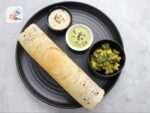
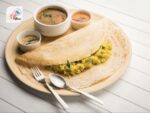


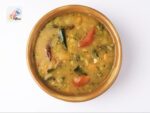
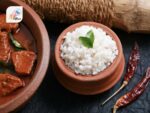
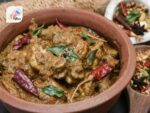
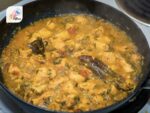
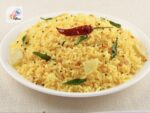
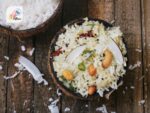
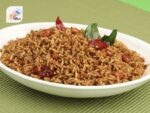
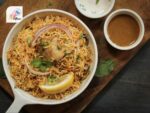

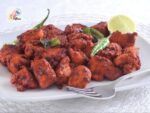
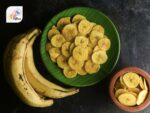
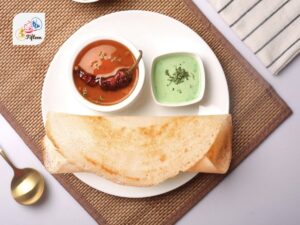
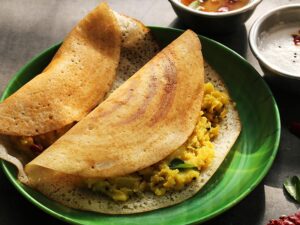
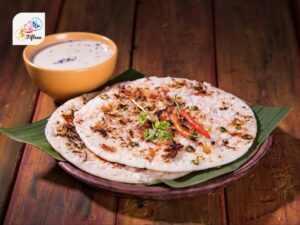
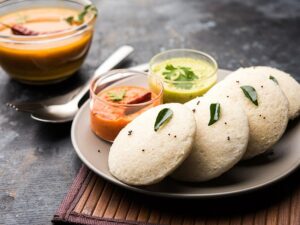
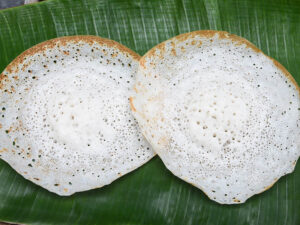
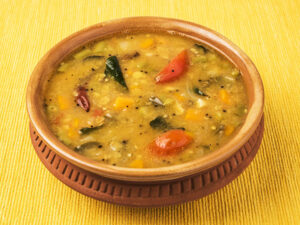
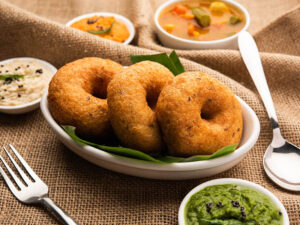
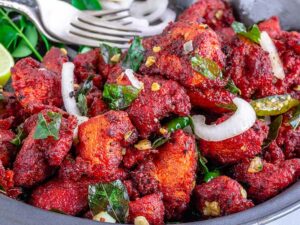
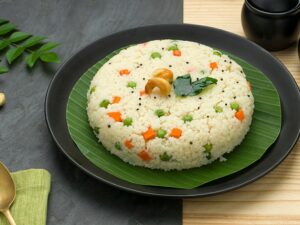
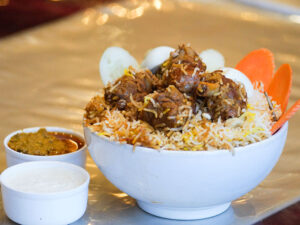
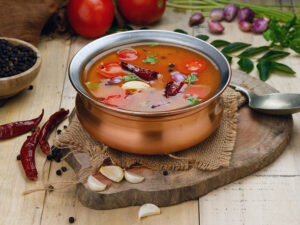
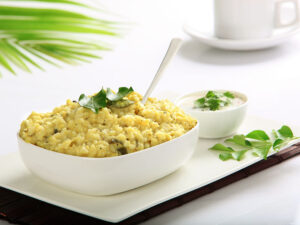
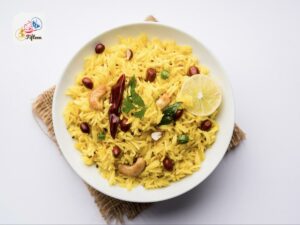
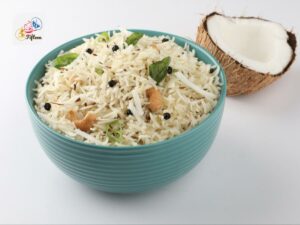
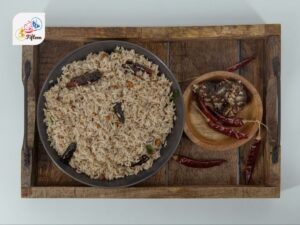
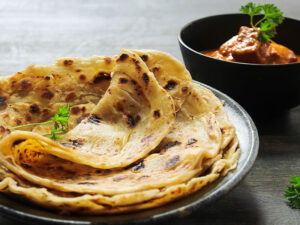
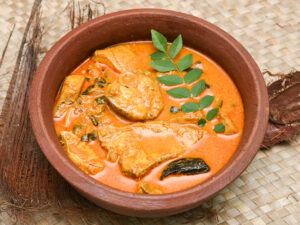
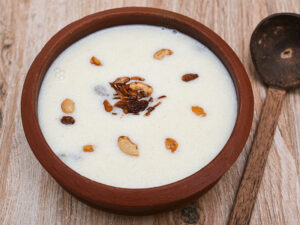
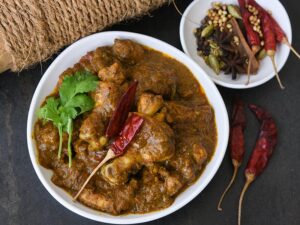
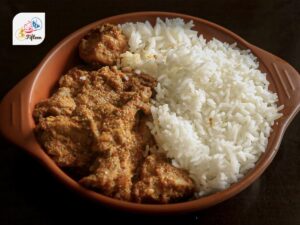
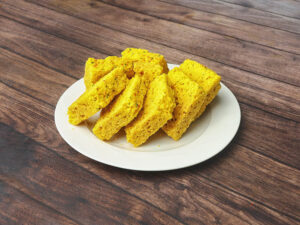
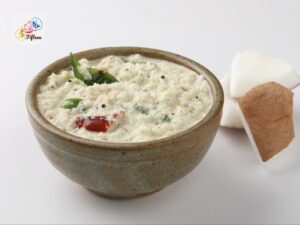
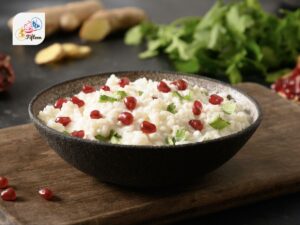
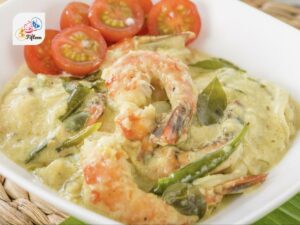
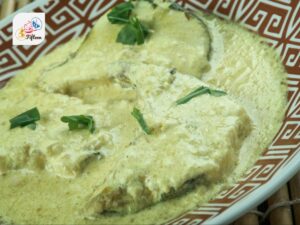
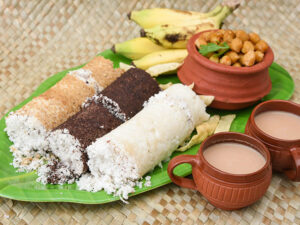
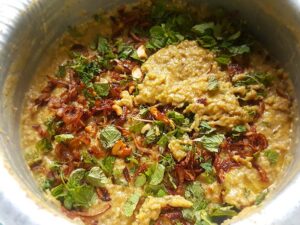
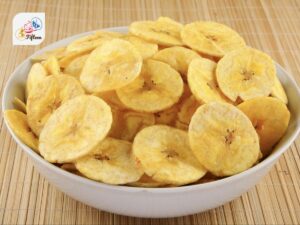
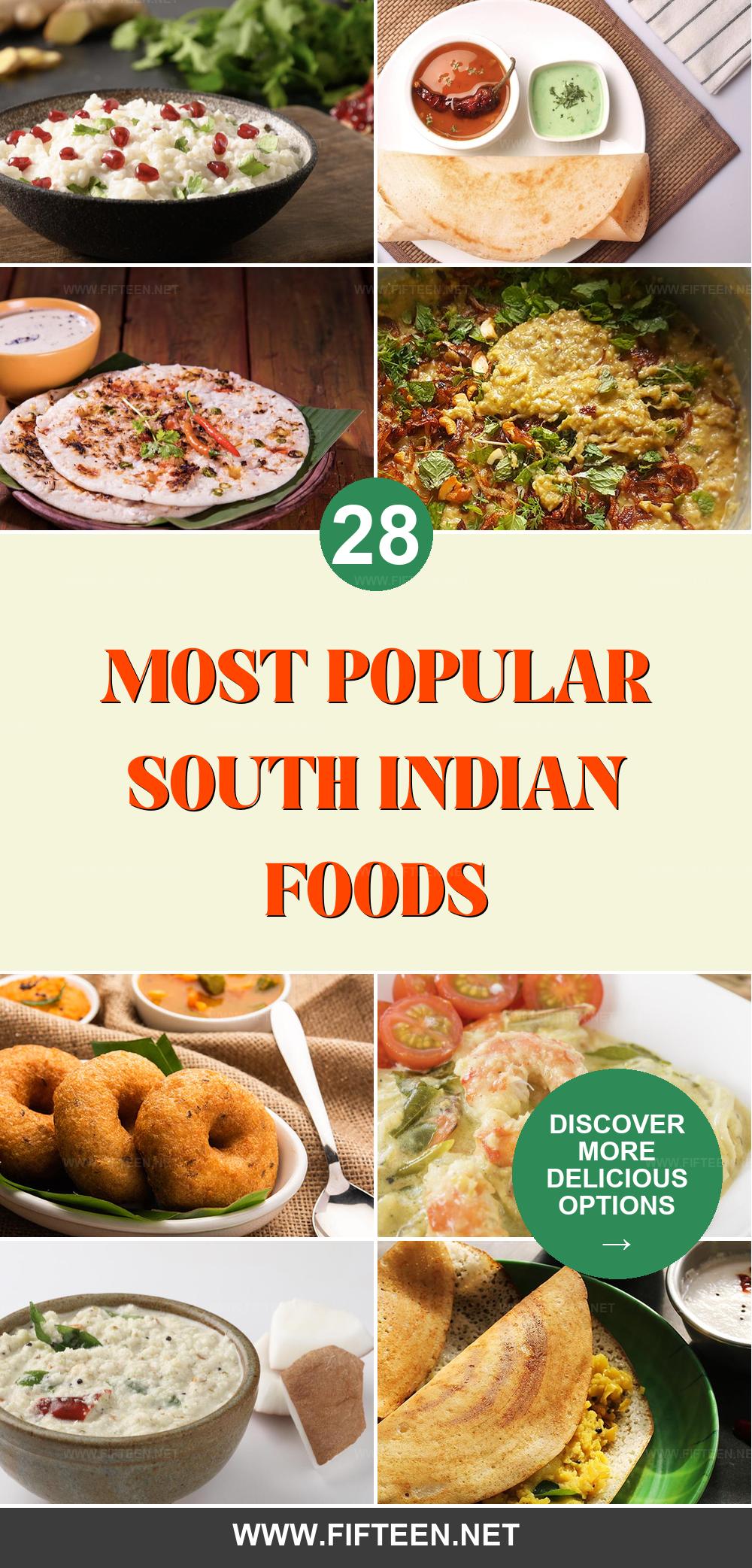
Jamie Scott
Editor in Chief, Senior Content Writer
Expertise
Home Cooking, Meal Planning, Recipe Development, Baking and Pastry, Food Editor, Cooking-video Maker, Western Food Evaluation Expert
Education
Le Cordon Bleu College of Culinary Arts
Local Community College, New York, NY
Jamie Scott is a skilled culinary expert and content creator specializing in Western cuisine. With over 15 years in the culinary field and formal training from Le Cordon Bleu, Paris, Jamie deeply understands how to blend nutrition with delicious flavors. His passion for cooking matches his commitment to making healthy eating accessible and enjoyable.
On Fifteen.net, Jamie brings a fresh perspective to classic dishes and beverages, offering readers insightful recipes, cooking tips, and a fresh view on meal planning that emphasizes taste, health, and simplicity.